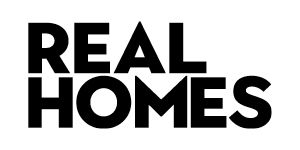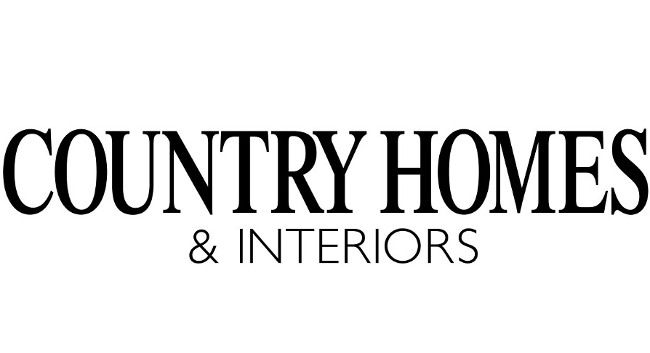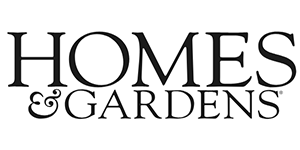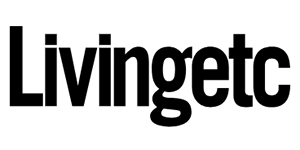RISK ASSESSMENT & METHOD SATEMENT
Exhibitor risk assessments will need to include the transmission of COVID-19, together with the control measures to be implemented to minimise this risk, during all stages of the exhibition (build up, open & breakdown). Please use the below to assist and don’t hesitate to get in touch with the operations team if you would like to discuss in more detail.
RISK ASSESSMENT GUIDELINES
As exhibitions and events are deemed as hazardous environments, it is a requirement under Regulation 3 of Management of Health and Safety at Work Regulations 1999, that every employer and all self employed carry out a risk assessment. This regulation requires exhibitors to assess the risks to workers and others, who may be affected by their work business. This will enable them to identify the safety control measures they need to take to comply with health and safety law. All exhibitors are required to undertake a suitable and sufficient Risk Assessment which should include all work practices, hazardous exhibits and the risks to be found on site. Space Only exhibitors must also ensure that they or the company responsible for building and dismantling their stand send a copy of their Risk Assessment and Method Statement when submitting stand plans.
By Law, your Risk Assessment must be 'suitable and sufficient': A suitable and sufficient risk assessment is one that:
- Correctly and accurately identifies the hazard.
- Disregards inconsequential risks and those trivial risks associated with life in general.
- Determines the likelihood of injury or harm arising.
- Quantifies the severity of the consequences and the numbers of people who would be affected.
- Takes account of any existing control measures.
- Identifies any specific legal duty or requirement relating to the hazard.
- Will remain valid for a reasonable time.
- Provides sufficient information to enable the employer to decide upon the appropriate control measures, taking into account the latest scientific developments and advances; enables the employer to prioritise remedial measures.
It must also be simple to understand, implement and communicate to all your staff and contractors. Below are some guidelines to assist you with writing a Risk Assessment.
Step 1: Look for the hazards:
What equipment, materials and chemicals will be used? How much noise and dirt will there be? What are the ground conditions? What vehicle movements and lifting operations have to be considered? Do you need to schedule a 'Late Working Rota' to avoid tiredness and accidents? How will you be disposing of waste? Are there any electrical installations? What hazardous vehicles/exhibits do you have? Can visitors fall from a height? Can visitors harm themselves on any of your exhibits/stand fitting? What fire prevention measures will be put in place? Will anyone be undertaking any heavy lifting? Is there any working at height taking place? Are any power/hand tools being used? Will there be catering on the stand that will result in food waste? Will there be any hot surfaces? Are you having any live displays on the stand that will require additional safety measures? Is there anything that could pose a slip/trip hazard?
Step 2: Decide who could be harmed and how:
Who will be affected by your work and most at risk? Think of your employees, contractors or Exhibitors on or near your stand, through to the visitors themselves. Safe working depends on co-operation and exchange of information between firms on site, so take this into account and consider necessary precautions on every aspect of the work being carried out, which may include training and the provision of relevant information.
Step 3: Evaluate the risks and write down Control Measures:
Once you have done this adequately, you can then decide on the appropriate action you are going to take to eliminate them. Ask yourself (a) can the hazard or risk be removed completely or done in a different way; (b) if the risk cannot be eliminated, can it be isolated, controlled or reduced (and detail how); (c) can protective measures be taken that will protect the entire workforce/visitors on site? Protective work wear should be considered as the last step to take and may not be the only solution.
Step 4: Record and notify the findings:
Write down the findings of your Risk Assessment. Pass on information about significant risks to those people identified in Step 2 and record what measures you have taken to control those risks. Write it all down, then do it on site and remember to keep it simple.
Step 5: Review your findings:
This allows you to learn by experience and take account of any unusual conditions or changes that occur on site. The Stand Manager and/or Principal Contractor should draw up the Risk Assessment as well as a specific Method Statement and go through it with all relevant parties in advance of the Show. Update the Risk Assessment as and when required, such as if new work practices are brought in or new staff employed or the working environment changes in any way. Ordinary hand-written changes are quite acceptable, but remember to implement the changes required for next time.
Remember that you must communicate any changes to your Risk Assessment to all those that are involved, otherwise you will have wasted your time and potentially put your colleagues at risk.
Method Statement Guidelines
- It is vital that an Exhibitor undertakes a suitable Method Statement and submits it at the same time as the stand design.
- Please note that the legal requirement to produce a Risk Assessment will assist you when preparing the Method Statement.
Question: What do I include in the Method Statement?
Answer: our method statement should, as a guide, include the following:
Responsible Person(s):
The employee who will be responsible for the construction and breakdown of your stand): eg: 'Mr ............' is in charge on-site, and can be contacted on (mobile) in an emergency out of hours.
Details of the Stand:
The loadings, dimensions, location, unusual stand features): eg: To be erected in Hall......on stand........surface total...... upper deck m² structural calculations for a design load of....... kg/m²
Access:
Details of the entry point into the halls and the route to the final position: eg: There will be no abnormal deliveries - the estimated number of vehicles on-site will be three.
Erection and Timetable:
The sequence and schedule in which all the stand elements will be built, including alignment, electrical connections etc): eg: We will erect the stand in two teams - one team for the upper deck and one team for the back wall, partition walls, displays etc (forklift trucks see lifting); The estimated number of hours to erect the stand is 36 which will fit in with the Organisers timetable; there will be no late working for this exhibition; the number of personnel needed (within the time allowed) to safely complete the stand is eight.
Stability:
Methods of ensuring adequate structural support of any stand element that requires cross bracing, with calculations and inspection certificate from an independent structural engineer: eg: Stability will be ensured at all times. Procedures as follows: upper deck structure consists of pillars and beams (heavy-duty steel beams of square section (20 x 20cm consisting of IPB 200 steel). Steps of Erection First frame assembled on floor, truck lifted into the vertical, held by temporary props. Second frame will be likewise truck lifted to vertical and connected to first frame using beams. Props will then be removed as this rectangular structure can stand for itself. It will be positioned and aligned as appropriate. Any pillars and beams will then be connected to the basic structure one after the other (in sequence) until the upper deck is completed. Wooden beams will be inserted into the steel beams to provide support for the platform floor boards (screwed to wooden beams). Stairs will be assembled and attached to upper deck. Before proceeding to other work on the upper deck the balustrades/railings will be fitted.
Lifting:
Outline the equipment that will be used, their capacities, weight, locations and floor loadings. Check the operative's current licence or Certificate of Competence; check machine's inspection certificate or maintenance record: eg: Forklift truck required for erection - 2 tonnes lifting capacity to be sourced by the appointed lifting company and provided locally.
Scaffolding:
Include details of temporary and mobile scaffolds, access towers and other work at height which you intend to carry out: eg: A 3m mobile scaffold tower will be sourced locally, with all safeguards properly employed on-site. Operatives will be trained and experienced in scaffold systems.
COSHH:
(Any proposed use of hazardous and toxic substances must be advised to the Organisers and Venue. Outline the protection provided for employees and workers on adjacent stands): eg: There will be no hazardous or toxic substances used on-site.
Environment:
Consider any abnormal noise that may be present, or work which may create dust or fumes. What ventilation and other control measures will be provided?: eg: No abnormal noise, dust or fumes will be present. Current hall ventilation is adequate.
Services:
Note where electrical work will be carried out, welding, gases, compressed air, water or waste services will be brought onto site: eg: Electrical work will be carried out by the appointed Contractors. There will be no welding, gases, compressed air, water or waste;
Safety features:
Identify the safety equipment and precautions that you will be providing on-site, including protective measures that you will be implementing for all of the above, and areas of risk as highlighted by your Risk Assessment: eg: Hard hats will be supplied to all staff in the vicinity of overhead work; a banks man will be employed when reversing our vehicles.
Exhibits:
Provide the Organisers with any/all details on exhibits which may present a risk to the public and/or the operator. How will this exhibit be delivered onto your stand? What machine guarding or other special requirements are there? What hazardous waste will be produced?: eg: The machine will be roped off and strong transparent guards used as detailed in our Risk Assessment. It will be delivered onto the stand by the appointed lifting company. The waste will be collected after the show shuts each day and removed.
Covid-19 transmission - exhibitor duties & responsibilities
Future Publishing and The Homebuilding & Renovating Show take their responsibilities very seriously when dealing with this disease. As organisers we have taken numerous steps to ensure the overall show has the necessary measures in place to manage the risk of transmission.
The first step is to carry out a COVID-19 risk assessment which will identify the hazards, their risk and the control measures that you will need to minimise the risk and successfully exhibit.
There is already a useful risk assessment template on this which has been produced by the HSE and can be found on the following link - www.hse.gov.uk/coronavirus/assets/docs/risk- assessment.pdf.
Once completed you will need to submit this risk assessment so that we can check this in line with all of the measures we, as organisers, are putting into place. These should be sent to info@maelstromeventsolutions.co.uk
This guidance is correct at the time of writing this document, however, given the constant research and new guidance please note that these are liable to be updated quickly and on an ad-hoc basis. Please ensure you stay up to date with the latest messaging and guidance from government.
COVID-19 – The Key Messages
- Stay At Home Guidance - Please ensure that all of your staff and contractors are informed of and follow the ‘stay at home’ government guidance. This should be for individuals who have symptoms of COVID-19, live in a household or are in a support bubble with someone who has symptoms, and those that have been advised to self- isolate as part of the government’s test and trace service.
- Risk Assessment – a risk assessment assessing COVID-19 must be carried out for your activities at the event.
- Social Distancing – wherever possible a 2m gap should be maintained. Where this distance is reduced to a minimum of 1m further mitigation measures should be considered and written into your risk assessment.
- Enhanced Cleaning and Hygiene– Enhanced cleaning and hygiene is essential for you, your staff and those that may come into contact with you during the event.
- Detect – you should be fully aware and informed of all of those people associated with your stand build as well as the staff manning your stand. These details may be required as part of the government’s test and trace scheme.
- Communication – it is essential that you establish how you will communicate any COVID-19 specific messaging to visitors. Likewise consideration needs to be given to ensuring your staff are kept fully informed and reminded of your risk assessment and policies.
- Protect – Consider what PPE may be required or indeed whether separation screens are required. Additionally, what will be your processes if symptoms occur or somebody has to self-isolate.
Some guidance is shown below which we would consider minimum standards for you to adhere to, however they are not considered to be an exhaustive list. By conducting your own risk assessment you will determine the measures that are right for you.
COVID-19 PRE-SHOW PLANNING
STAND DESIGN
- Stand design should be considered to ensure maximum social distancing is permitted.. How are you controlling this space to ensure you do not become overcrowded?
- The stand should be designed so that it can be as modular as possible. This means it can be constructed in such a way that the majority of the build can be conducted off site, ensuring that you limit the amount of time needing to be spent on site building it.
- Are there any planned meeting areas on your stand. These should be designed in a way to ensure social distancing and protection against spread. Do you need screens to separate people who are meeting?
- Ensure that you pre-book as much as you possibly can. Try to minimise the amount of movements away from your stand during the show.
STAND MATERIALS/ PRODUCTS
- When thinking about furniture can you order items that are not fabric to ensure they can easily be wiped clean.
- Consider the amount of promotional products/ literature you require on site. This should be kept to an absolute minimum and where possible digital methods should be used.
- How are your products/ stand materials being delivered to site? Consideration should be given to ensure that these are only delivered when required. You will be strictly asked to keep all items on your stand space at all times to help with social distancing.
- If you do need to deliver everything/anything prior to being able to accept it all on to your stand area, please contact the official event freight supplier to discuss opportunities for storage.
- Think about the signage that you will need to position around the stand to support your approach to managing the risk of COVID-19.
CONSTRUCTION ACTIVITIES
- What is the least amount of time that your stand can be built in safely? Speak with the organisers and agree times that you can build and breakdown your stand in a way that eases congestion and helps keep the people on site at any one time to a minimum.
- It is vital that you brief all of your staff about the Site Rules and Regulations. These should be briefed in advance of coming on site.
- When planning your construction activities consider back-to-back or side-to-side working (rather than face-to-face) wherever possible.
- All construction activities should be kept to a minimum and the stand designed to keep the number of people needed to build the stand to as few as possible.
- Please note the details in the timetable which indicate when you can arrive on site to setup. Please ensure that you stick to these timelines so everybody is able to social distance.
HOSPITALITY
- At this time we would advise against any formal hospitality arrangements on your stand such as drink parties etc.
- Any giveaways should be available pre-wrapped and dispensed in such a way that ensures the least amount of people touch the item.
PPE
- PPE is considered as the lowest level of mitigation measures which should only be considered if the risk cannot be managed through preventative measures such as social distancing and hygiene regimes etc.
- Consider the use of PPE across all phases of the event as part of your risk assessment and provide it as necessary within your stand space. Remember that individual pieces of PPE should not be used by multiple people without adequate cleaning in between.
- If your risk assessment does show that PPE is required, then you must provide this PPE free of charge to anyone who requires it within your stand boundaries. Any PPE provided must fit properly.
BUILD UP AND BREAKDOWN
- No persons should come to site who have any of the recognised symptoms of COVID-19. Please ensure that all of your staff and contractors are informed of and follow the ‘stay at home’ government guidance. This should be for individuals who have symptoms of COVID-19, live in a household or are in a support bubble with someone who has symptoms, and those that have been advised to self-isolate as part of the government’s test and trace service.
- All stand activities should be confined to your stand area.
- Please ensure that your materials are kept as close to your stand as possible. There should be no ‘spreading’ to allow the maximum amount of space for people to build and breakdown.
- Limit the amount of unnecessary movements around the event site. Only trips to your vehicles, comfort breaks and meal breaks should be considered. Make sure you have on site contact details for all of your suppliers to reduce the need to leave your stand area.
- Should anybody from the stand need to leave the area please ensure they follow the advice from the organisers given through the site induction, on-site instructions, general signage as well as the general government advice.
OPEN PERIOD
CLEANING AND HYGIENE
- Consider the cleaning routines for your stand. Ensure that you are regularly cleaning and keep a note of when this has been carried out.
- Encourage your staff to regularly handwash and give them sufficient breaks to be able to do so.
- If there are any high touchpoints on your stand please ensure these are factored into your regular cleaning regime.
- Have a good amount of sanitiser on the stand for your staff and for any of your clients that may wish to use it.
STAFF
- As in the build-up and breakdown limit the amount of unnecessary movements around the hall. Only trips to your vehicles, comfort breaks and meal breaks should be considered.
- Should anybody from the stand need to leave the area please ensure they follow the advice from the organisers given through the site induction, on-site instructions, general signage as well as the general government advice.
- Plan the manning of your stand so that numbers are considered as well as time spent on the stand.
- Consider travel to and from work and how this will be done as safely as possible for your staff.
VISITORS TO YOUR STAND
- Try and make their experience as contactless as possible.
- Make sure where possible you use contactless methods to capture people’s data i.e. through scanning machines etc.
- Think about the messages that you can give to anybody you talk to that will ensure they get all the subsequent information they need digitally.
- Always be aware and observe the visitors coming to your stand. Ensure that you react to any unexpected pinch points and avoid queueing wherever possible, unless you are able to achieve this in a socially distanced way.
- Keep reviewing your plans and make changes where necessary. The best laid plans can happen very differently in real life so it is important to be aware of this and monitor the visitor experience through your stand.
EMERGENCY SITUATIONS
- Measures and reactions to immediate life threat emergencies (such as Fire or Security Emergencies) take precedence over COVID-19 controls, for example social distancing. All teams should be briefed to this effect.




)
)
)
)
)
)
)
)
)









